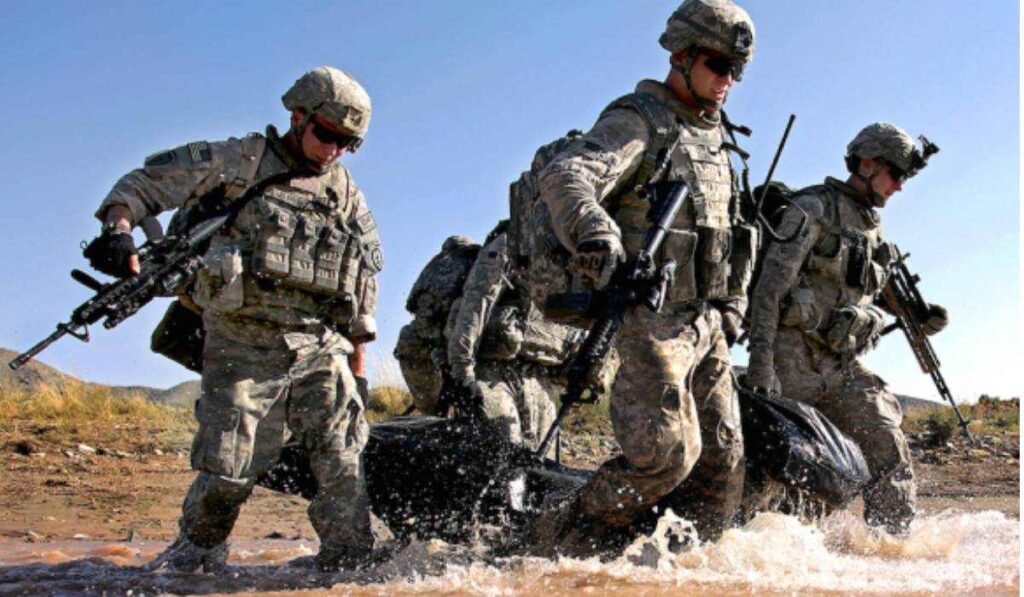
The U.S. is anticipating future battles and preparing to deal with them effectively. This is why the U.S. Army is slashing the size of its force by about 24,000. It also plans a massive restructuring to be better able to fight the next major war.
This comes as the service struggles with recruiting shortfalls that make it impossible to fill all positions. The cuts will mainly be in already-empty posts, so not actual soldiers. Job cuts included those related to counterinsurgency. They were a necessity during the Iraq and Afghanistan wars, but not as much today.
About 3,000 of the cuts would come from Army special operations forces. However, at the same time, the plan is to add about 7,500 troops in other critical missions. There will also be five new task forces around the world with enhanced cyber, intelligence, and long-range strike capabilities.
Army Secretary Christine Wormuth said she and Gen. Randy George, the Army chief, worked to reduce the number of places where there were empty or excess slots.
ALSO READ: Authorities Claim Oklahoma Nonbinary Student Didn’t Die From School Fight
“We’re moving away from counterterrorism and counterinsurgency. We want to be postured for large-scale combat operations,” Wormuth said Tuesday. “So we looked at where were there pieces of force structure that were probably more associated with counterinsurgency, for example, that we don’t need anymore.”
George added that Army leaders did a lot of analysis before they chose the places to cut. “The things that we want to not have in our formation are actually things that we don’t think are going to make us successful on the battlefield going forward,” he said.
According to an Army document, the service is “significantly overstructured,” and there aren’t enough soldiers to fill existing units. It says the cuts are “spaces,” not “faces,” and the Army is not asking soldiers to leave the force.
Instead, the decision reflects how, for years, the Army hasn’t been able to fill its empty posts. The Army, as it is now, can have up to 494,000 soldiers. However, the total number of active-duty soldiers right now is about 445,000.
POLL — Is Artificial Intelligence a Net Positive or Negative for Mankind?
Under the new plan, the goal is to bring in enough troops over the next five years to reach a level of 470,000. The planned overhaul comes after two decades of war in Iraq and Afghanistan that forced the Army to expand to fill the brigades sent to the battlefront dramatically.
Over time, the military’s focus has shifted to great power competition from rivals like China and Russia and threats from Iran and North Korea. Army leaders said they carefully scanned the board at all the service’s job specialties in search of places to trim. They also examined the ongoing effort to modernize the Army with new high-tech weapons to determine where additional forces should go.
According to the plan, the Army will cut about 10,000 spaces for engineers and similar jobs linked to counter-insurgency missions. An additional 2,700 cuts will come from units that don’t deploy often. Then, 6,500 will come from various training and other posts.
ALSO READ: Businessman Kevin O’Leary Criticizes Canada’s Leadership, Says They Mismanage the Country
There also will be about 10,000 posts cut from cavalry squadrons, Stryker brigade combat teams, infantry brigade combat teams, and security force assistance brigades, which are used to train foreign forces.
The changes represent a significant shift for the Army to prepare for large-scale combat operations against more sophisticated enemies. But above all, they underscore the steep recruiting challenges that all military services face.
You Might Also Like:
Judge Orders Officers to Jail Indicted FBI Informant While He Awaits Trial
“We Need Change!” Mourners Fume While Mourning Death of Nonbinary Student in Oklahoma City Vigil
Greg Abbott Takes Credit for Fall in Migrant Entries Into Texas
Migrant Influx Raises Concerns in Predominantly Hispanic U.S. City
“We Don’t Have the Money, Close the Border!” Critics Knock Biden Administration Over Border Crisis
